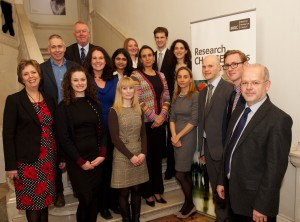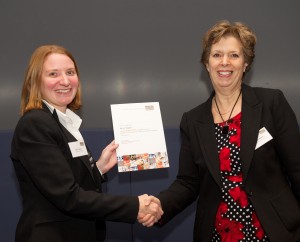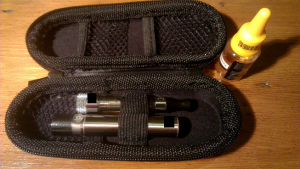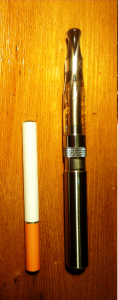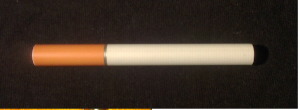Deciding to pursue your studies in a foreign country is both an exciting and scary prospect. During the spring of 2012 I made the decision to leave my family and friends behind in Canada and make my way across the ocean to the great unknown that was Bristol to pursue a PhD in Experimental Psychology. Despite never having visited the city, and not having anyone I knew waiting for me on the other side, I took the leap and boarded a plane to the next few years of my life. I haven’t looked back since.

International students have become commonplace at universities worldwide among undergraduates and postgraduates alike . If you are one of many students considering studying abroad, you will be in good company no matter which university you choose to attend. International students tend to be active members of the student population and are especially eager to immerse themselves in all aspects of student life. Having left their old lives behind, international students coming to a new city and university are looking to make new friends and have new experiences. By attending events and visiting the Bristol International Student Centre (BISC) I quickly met many other postgraduates from around the world who I had the chance to discover the city with, and formed lasting friendships. Whether they are in your programme of study or not, or even doing a Masters or PhD, there are often many more similarities than differences between you, and you will be able to quickly establish your new circle of friends in your home away from home.
One thing that may take some time is adjusting to a new academic system, which may differ from what you are used to in your home country. While this is may be more relevant to taught postgraduates rather than research students, you may have to come to terms with it anyway for your own degree requirements or if you decide to teach or mark essays (more on that later). For instance, while a PhD in experimental psychology back home entails demanding modules and coursework while conducting research, the same degree is focused almost exclusively on research output in the UK. Also, many of my postgraduate friends who were studying for a taught Masters degree felt that there was a lot crammed into one year, as the same degree in many of their countries often last two years with the same amount of content. I certainly did not envy their exams and coursework! At Bristol’s School of Experimental Psychology, PhD students who have not previously completed a Masters, like myself, are asked to attend the taught Masters lectures and have to complete a certain amount of coursework. I quite enjoyed attending these lectures and it was a nice refresher during the early months, as my PhD work was slowly starting to pick up. Like most postgraduate departments, you can expect to have colleagues from all walks of life, each with different backgrounds and usually studying quite different topics even within the same school. This only adds to your experience, as you learn from each other almost as often as you might your supervisors or your lecturers; having the luxury of all of the school’s PhD students working in the same building is invaluable. You are usually only a door away from the answer to most of your questions, and more often than not someone in your own office can answer it for you! I know that the university where I did my undergraduate degree did not have quite the same set-up, so I didn’t take the convenience of the PhD students’ office building (only across the street from our main department) for granted. While these types of things may not be at the top of your priority list when looking at foreign universities, they can have a serious impact on your quality of life as a student. Take every opportunity you can to gain insight from current students, as no one is in a better position to give you an idea of what you’ll be getting yourself into for the next few years of your life. I was lucky enough to contact a colleague with whom I share a supervisor who was not only kind enough to answer my questions but also showed me around and helped me get set up once I arrived in Bristol. While I can only speak to my experience in my own school, PhD students tend to be very kind and helpful; you only need to ask for it!

Of course, an important thing to consider when looking to study abroad is cost. Let’s face it, being an international student isn’t cheap. That being said, if you are coming from somewhere like the United States, you may be surprised to know that tuition isn’t much more than what you might pay at home. However, coming from Canada (where tuition fees are quite low) meant I would be taking on a significant increase in the cost of my schooling. While tallying the cost of tuition, rent and living expenses may be daunting, there are some important things to bear in mind. The first is funding. Even if you are deciding to study abroad, your country may very likely still have funding opportunities available to you. What you need to do is find them and apply as soon as possible. Something to bear in mind is that funding, if awarded, only begins several months after your application has been submitted, reviewed, and finally approved. And most likely they will not pay you retroactively for all the time that application was under review and this process can take up to almost one year in some cases. This means in an ideal situation you should try to apply for funding almost a full year before you expect to begin your studies. If this is not feasible, keep this in mind and start working on it almost as soon as you arrive. Acquiring funding will really help you breathe easier and not have to worry as much about keeping finances airtight. Of course, if you can’t get funding you will need to be a bit more proactive and find ways to earn money while you are studying. While being a postgraduate is already quite demanding in itself, with enough organisation and time-management you can balance it all and be successful. It just might take a bit more work. An excellent way to make some money while you are studying is to take on a research demonstrator or teaching assistant position. As a demonstrator in psychology, I attend the lab sessions for year 1 or year 2 statistics lectures and assist the students with completing the data collection, analysis and write up for their lab reports. I am also responsible for marking a group of lab reports and providing the students with feedback for future reports. This makes for a very attractive addition to your CV and is a great way to get some first-hand experience of what you might expect from a future faculty position. If you are even contemplating a career in academia in the future this is a great way to get a head start, and I would definitely recommend it. If demonstrating isn’t your thing, consider essay marking. This still gives you a small taste of the academic world and is often less time-demanding. Both these jobs are usually available in your department and also tend to pay pretty well. Another great place to look for jobs is in your university’s student union. There tend to be a lot of jobs with hours and pay rates that are really attractive to students, and as a postgraduate you are an attractive candidate who can hopefully market yourself well in an interview. I was lucky enough to nab a job involving sports with flexible hours and I really enjoy it. Finally, another great job opportunity is working as a senior resident or warden at a university hall. Rent or accommodation costs will represent one of your most significant expenses, and working as a senior resident can see your rent cut by as much as half. Depending on the hall, you may have different commitments or working hours but they tend to be quite reasonable and the savings are really worth it. These are only a couple of ways to make money or cut costs while you are studying and there are many more out there if you look for them. Although this should be a no-brainer, I will mention it here: take advantage of cheap or FREE activities, services and especially FOOD whenever the opportunity arises. These can be quite numerous, especially at the beginning of the academic year, so be sure not to miss out! While being an international student is far from cheap, remember that you are getting an invaluable experience at a new university in a new country. This is especially true if you are attending a prestigious university or working on a topic that you are very passionate about, because then you will never doubt your investment. And that is what your education is: an investment. Even if you decide to return home after your degree, you now have experiences that are likely to be radically different from the other people who may be applying for the same job as you. You have acquired more than just a degree while away from home and it’s important to remember that when you go to that job interview or write that next letter of intent.

It is quite hard to summarise my experience as an international postgraduate student but so far the experience has been nothing less than positive. I do not take my situation for granted: I am studying a topic I am very interested and passionate about at a world-class university with excellent supervisors and the best colleagues I could ask for. If you decide to study abroad for the right reasons, namely to pursue a degree that interests you in a place that inspires you and not your dream shopping destination, you will not be disappointed. If you have questions about anything I covered in this blog post or anything that I didn’t, feel free to contact me and I’ll be happy to answer any questions you might have. In closing, if you are thinking about studying abroad, do not be afraid to make the leap. Your friends and family will still be there when you visit and will support you on this journey that will change your life forever. Open up to new experiences, new people, and learning new things about yourself and you will not regret your decision.
Michael Dalili is a 2nd year PhD student in TARG.




